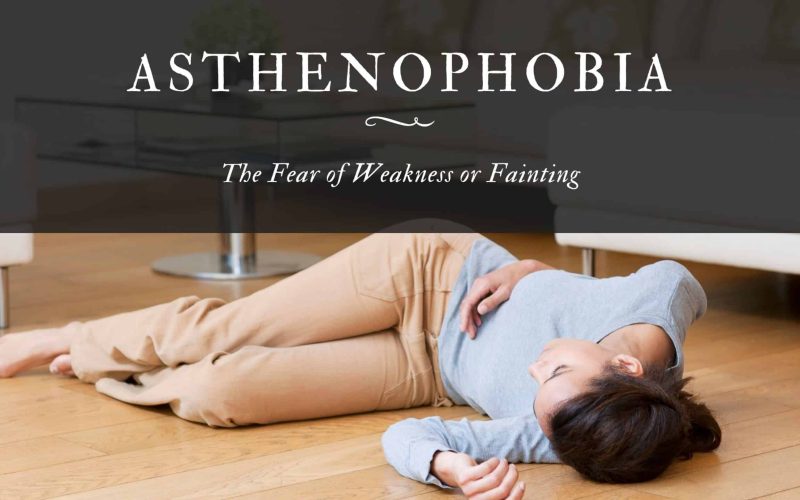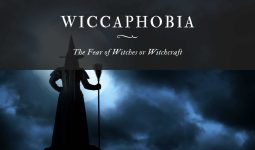The fear of fainting, also known as asthenophobia, is quite common as every person seeks to be in their best health-wise and also avoid things like nausea and fainting.
Asthenophobia is the deep or irrational fear of weakness or fainting, and this article will feed you all the essential information on its causes, symptoms, and much more.
Causes of Asthenophobia
As noted in the introductory part of this article, the fear of fainting is quite common. However, like every other phobia, there is no identified cause for the fear of fainting.
Nevertheless, a person can develop this phobia after suffering a medical condition that causes them to faint randomly and quite often.
Other possible may include experiences and stories of people who fainted and suffered severe injuries or even death. Also, a person may have a genetic predisposition to suffer from Asthenophobia, anxiety, and other mental health conditions.
A single uncomfortable experience associated with fainting is all it may take to trigger this phobia in such people.
Symptoms of Asthenophobia
Phobias of all kinds are to be taken seriously, as there is nothing like a minor phobia. If they are not properly handled or treated, they may begin to limit the sufferer’s quality of life.
In some cases, they may cause discomfort up to the degree of depression and extreme anxiety.
Knowing the best way to manage thoughts and anxiety is not only the best way to help a person live a normal life or overcome the fear of fainting or weakness but also a way to manage to live with all kinds of phobias.
People who suffer from Asthenophobia or fear of fainting or weakness will most times purposely avoid places or activities that put them in contact with the object of their fears.
Avoiding such situations may seem like a good quick fix, but the fact remains that if not completely understood, the fears you are facing might begin to hurt or limit your life in the long run.
Sometimes, people who suffer from Asthenophobia, which is categorized as a Specific phobia, try to avoid not only the main object of their fear (in this case, fainting or weakness) or the situations that may trigger it but also the thought of all things associated with fainting.
There have been so many cases of people who suffer the fear of fainting and have also had to deal with severe anxiety, depression, and even panic attacks.
The reason why Panic attacks for both those with this phobia and others can be very discomforting is because they are felt on a more physical level. People who commonly suffer panic attacks deal with a pounding heart, accelerated heart rate, or palpitations.
A person does not necessarily need to find themselves in a situation that exposes them to weakness or fainting before they experience Asthenophobia.
The human brain doesn’t necessarily have to be in that situation for a person to experience the symptoms of panic.
The human brain can create a unique reaction to fearsome situations, even when the subject is not exactly in that situation.
Just like all other phobias that exist, fear of fainting comes with both physical and/or psychological symptoms.
Physical Symptoms of Fear of Fainting and Weakness
People who suffer from weakness or fainting often experience panic attacks. These panic attacks can be quite distressing and extremely frightening for the person who suffers from them.
These symptoms of this and other phobias most of the time occur suddenly and without any prior warnings or signs.
Below are the most common physical symptoms of fear of fainting phobia:
- A choking sensation
- Rapid heartbeat (tachycardia)
- Pain or tightness in the chest
- Sweating
- Trembling
- Hot flushes or chills
- Shortness of breath or difficulty breathing
- A need to go to the toilet
- Ringing in your ears
- Confusion or disorientation
- Hyperventilation
- A sensation of butterflies in the stomach
- Nausea
- Headaches and dizziness
- Feeling faint
- Numbness or pins and needles
- Dry mouth
- Tightness in the chest/chest pain and difficulty breathing
- Rise in blood pressure
Psychological Symptoms of Fear of Fainting Phobia
Though not always, a person who suffers from asthenophobia may suffer some psychological symptoms in severe cases.
The following symptoms are the most common symptoms of asthenophobia:
- Feelings of dread
- Guilt, shame, self-blame
- Fear of dying
- Fear of losing control
- Fear of fainting
- Fear of harm or illness
- Withdrawing from others
- Confusion, difficulty concentrating
- Anger, irritability, mood swings
- Feeling sad or hopeless
- Feeling disconnected
- Anxiety and fear
In some unique cases, individuals may experience intertwined phobias, also known as complex phobias.
These can usually have a detrimental effect on an individual’s everyday life and mental health. Because they may limit a person’s life so much that they find it difficult to live healthy lives.
Treatment Options for Asthenophobia
For many of those who are suffering from any kind of phobia, including the fear of fainting or weakness – Asthenophobia, it is almost impossible to give them good enough reasons to seek medical help.
These people usually do not feel the need to seek treatment because they can avoid the cause of their fears.
It may seem like a healthy way to cope with such a condition, but avoiding triggers will only encourage a person with such a phobia to make excuses for themselves and suffer worse symptoms with time.
It is essential for any person who has this or any other phobia to always seek professional help if they begin to notice symptoms or as soon as possible.
This way, such a person doesn’t lose time and finds it much easier to understand what is happening to them.
With a clear understanding of what you may be dealing with, you can make the next move on overcoming your irrational fear of fainting or weakness.
While it is a known fact that most phobias are curable, it doesn’t change the fact that there is no single treatment available for any of them or any specific treatment that is guaranteed to work.
The result of any adopted method of treatment strongly depends on the individual who is suffering from the phobia and the severity in which that individual is experiencing Asthenophobia.
There are cases of phobia where a single treatment method may not be effective, but a combination of treatment methods may be more effective.
Please be advised that if you have any form of phobia or you notice any of the above symptoms, you are not advised to take treatment on your own!
Always ensure that you consult with a doctor ahead of time. The treatments that we have mentioned below are strictly for informational purposes and are not specific to the fear of fainting (Asthenophobia).
The treatment methods listed below are used in most cases of phobia.
Treatments or Therapies for Asthenophobia
There are talking treatments, also known as talking therapies, for fear of fainting phobia.
Talk therapies, which include counseling, have often proved to be very effective for the treatment of fear of fainting or weakness, also known as Asthenophobia.
Talking therapies are not invasive; they are a very laid-back treatment method. They all involve discussing behavior, thoughts, and feelings with a well-trained and proficient professional.
There are several types of talking therapy, but they all have the same goals, which is to:
- It helps you recognize unhelpful patterns in how you think or act and find ways to change them (if you want to).
- Help you resolve any complicated feelings or identify ways to live with them.
- It helps you understand and make sense of things around you and understand yourself better.
- Provide a safe time and place to express yourself to someone who will not judge you.
In most cases, talking therapies are the same as counseling therapy, psychological therapy, psychotherapy, and talking treatment.
There is often very little difference between what is meant when discussing these.
(CBT) Cognitive-behavioral Therapy
CBT treatments are one other popular treatment method for phobias that seem to be quite effective.
This therapy method stands on the concept that what humans think and perceive usually influences their behavior.
Experiencing distress and anxiety can be responsible for bending and distorting one’s perception of reality in some cases.
Cognitive-behavioral therapy aims to help a patient determine if what they think or feel accurately depicts reality.
If there are reasons to believe they are not, this treatment method will require the therapist to employ strategies to help challenge and overcome these fears and feelings.
For example, a person who is experiencing a fear of fainting phobia ( Asthenophobia), Through the help of Cognitive behavioral therapy, that person could identify if the fear and anxiety that they experience from fainting or weakness is a correct depiction of reality.
And if not, they can begin to work on ways to change that.
Medication for Fear of Weakness and Fainting Phobia
Medication should never be taken without first asking a doctor. In general, there is nowhere medication is recommended for the treatment of phobias or overcoming phobias.
Therapies are the only definitive way to overcome fears.
However, some types of medication are prescribed as quick fixes or short-term solutions to the side effects of phobias, which may include anxiety or depression.
Generally, three types of medication may be recommended for treating phobias or anxieties.
- Antidepressants
- Tranquilizers
- Beta-blockers
What to Know About Self-help With Asthenophobia?
It is common knowledge that one of the best ways to overcome any challenge or difficulty is to be prepared if you suspect that any might arise.
One of the easiest ways to prepare for such is to take good care of yourself. Being able to know the best way to help yourself is essential not only to be able to control your phobia of fainting or weakness but also to manage any other phobias and anxieties at an early stage before they get more severe.
We hope that this article has been helpful to you. Do not hesitate to share your thoughts and opinions with us in the comments section. Also, read up on other phobias and share.








